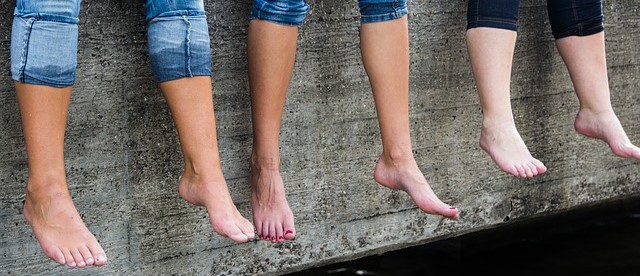While they’re not quite an eventuality, leg veins are becoming an increasingly common condition. It’s estimated that 40 million Americans suffer from them, including half of the population age 50 and older.
What can you do about them? In our last blog post, I highlighted some self-care methods that can prevent new spider and varicose veins from developing, but they won’t clear up existing ones. For that, you’ll need a dermatologist’s help. So, here, I’ll unpack what those treatments entail.

Diagnosis
Before your dermatologist begins any course of treatment, they’ll conduct a thorough physical exam to determine the extent of your leg veins. That may include some non-invasive tests, like a Doppler ultrasound, which shows the blood flow in your leg veins, and a plethysmography, which can help detect an abnormal blood flow.
The results will help your dermatologist pinpoint which treatment would be most effective. Sometimes, more than one type of treatment will be recommended to give you the best results and minimize the potential for side effects.
Sclerotherapy
Sclerotherapy is the most common treatment for spider and small varicose veins.
This is what you can expect to happen during the procedure: Your dermatologist will inject a chemical into different spots along the spider or varicose vein, which will irritate the vein’s walls. They’ll then massage the area and observe you for a little while before you’ll be permitted to leave.
The treatment is performed during an office visit. No anesthesia is needed.
Sclerotherapy causes the walls of the vein to stick together, so blood can no longer flow through it, improving circulation in the treated leg and reducing swelling. For the best results, two to three treatments may be needed.
To help prevent possible side effects, you’ll need to wear compression socks for the next two to three weeks and take daily walks. Otherwise, you should be back to your normal activities the next day.
Laser treatment
A laser treatment is an alternative for spider and small varicose veins.
Small spider veins may disappear immediately after the treatment. Larger ones and varicose veins will darken before gradually disappearing over the next month to three months. Three or more treatments may be needed to completely clear up your visible veins.
You’ll need to wear compression socks for a little while after the treatment and protect the treated area from the sun for three to four weeks, but you should back to normal activities the next day.
EVLT and RFA
Endovenous laser therapy (EVLT) and radiofrequency ablation (RFA) are newer treatments that, increasingly, are replacing the need to surgically remove a vein.
Both procedures are done under a local anesthesia. Your dermatologist will make a small incision and insert into the vein either a laser fiber for EVLT or a catheter for RFA. The device will heat up the vein, which will cause it to collapse and seal shut, all without inflicting any harm on the surrounding area.
With either treatment, it takes about a year for the treated vein to disappear, and you’ll likely need more than one treatment. But, as with sclerotherapy and laser treatment, you’ll be back to your life the next day.


 How to Get Rid of Visible Varicose Veins and Prevent New Ones (Part 1)
How to Get Rid of Visible Varicose Veins and Prevent New Ones (Part 1)